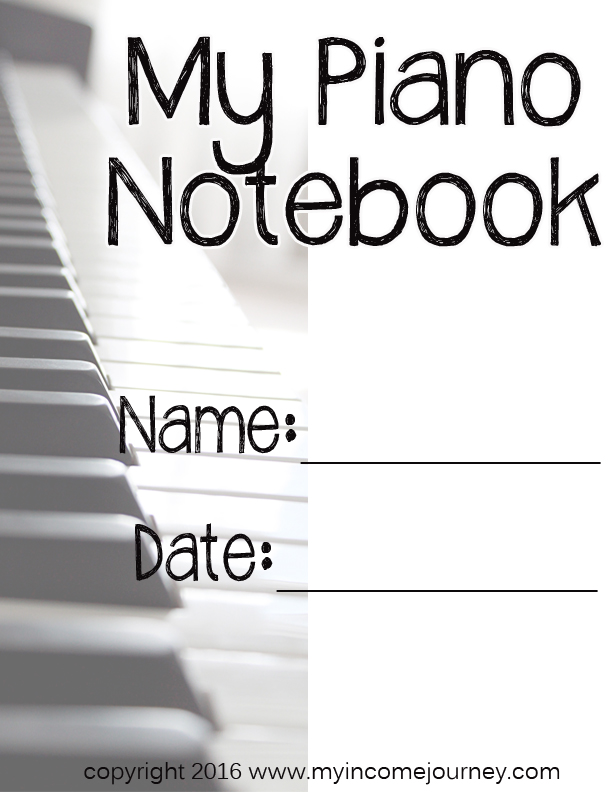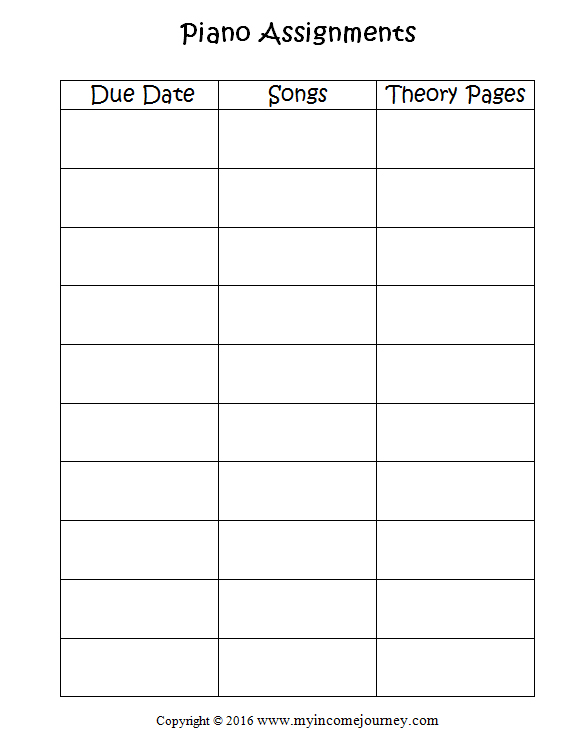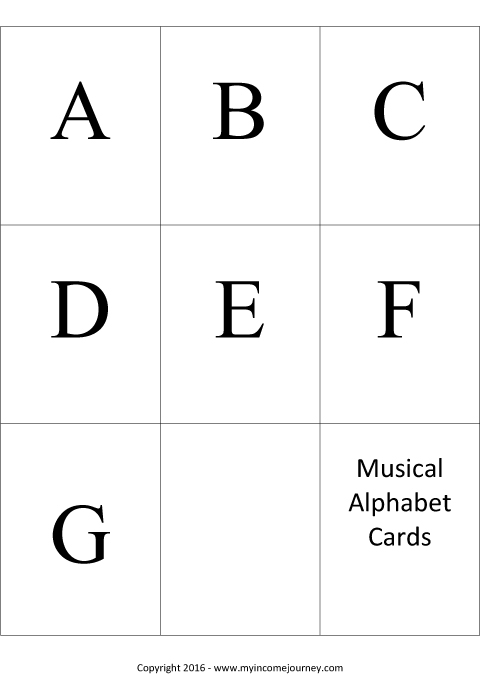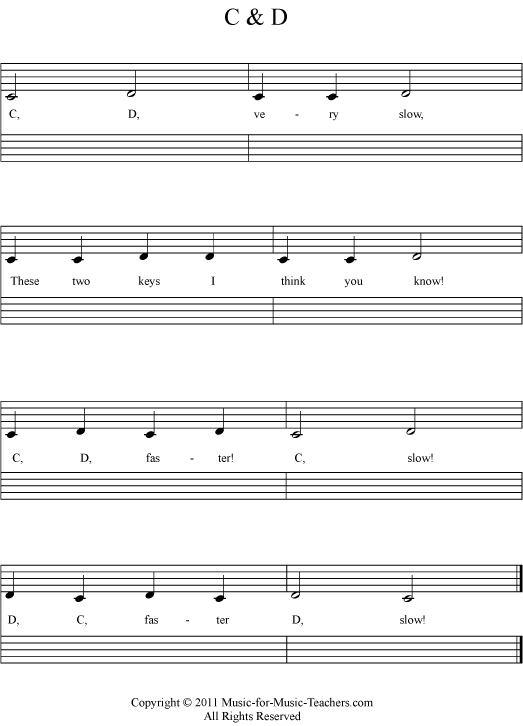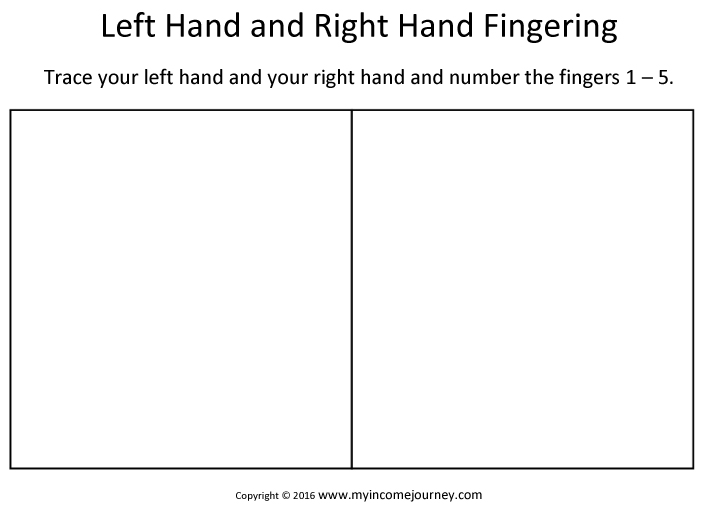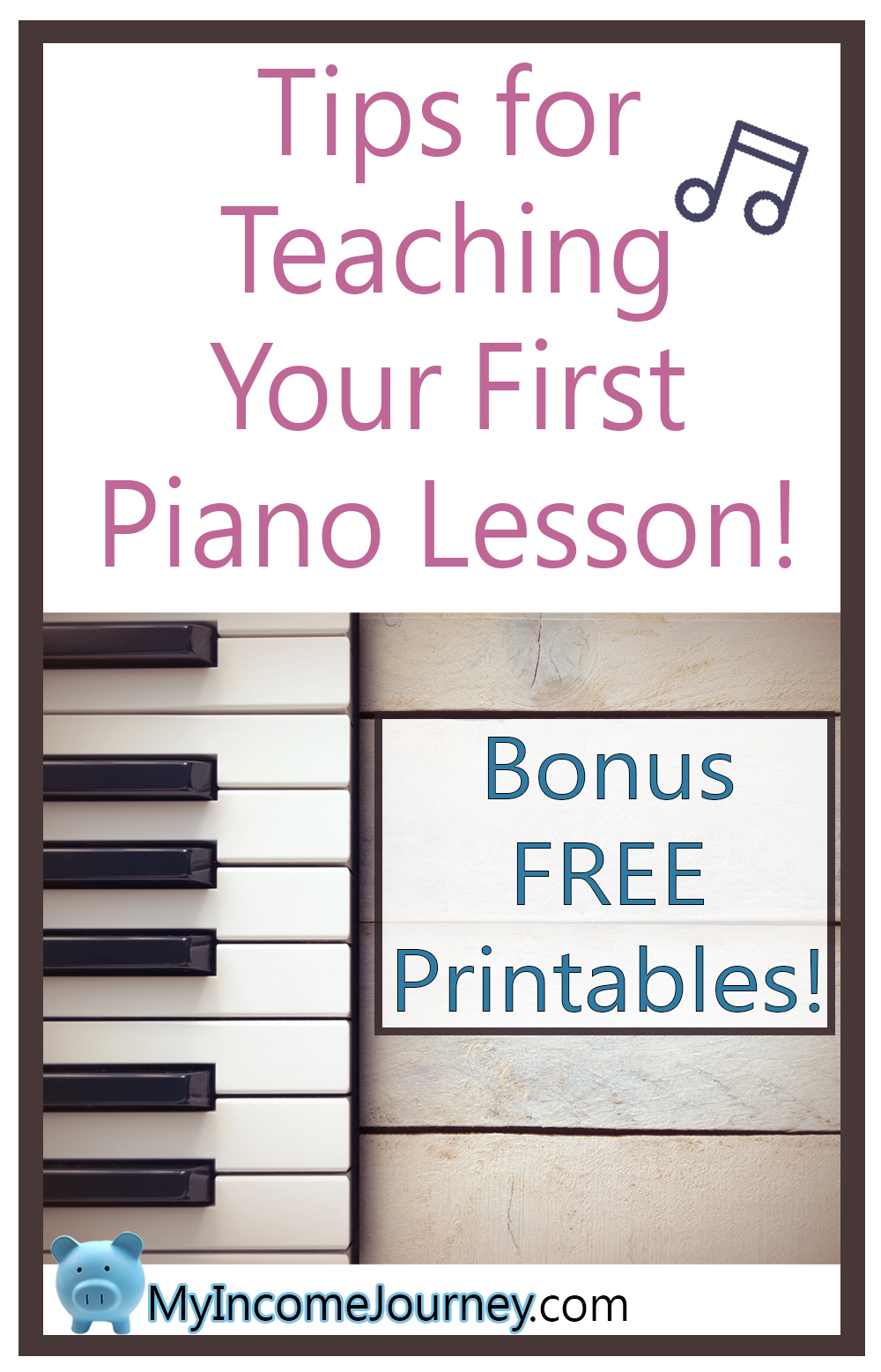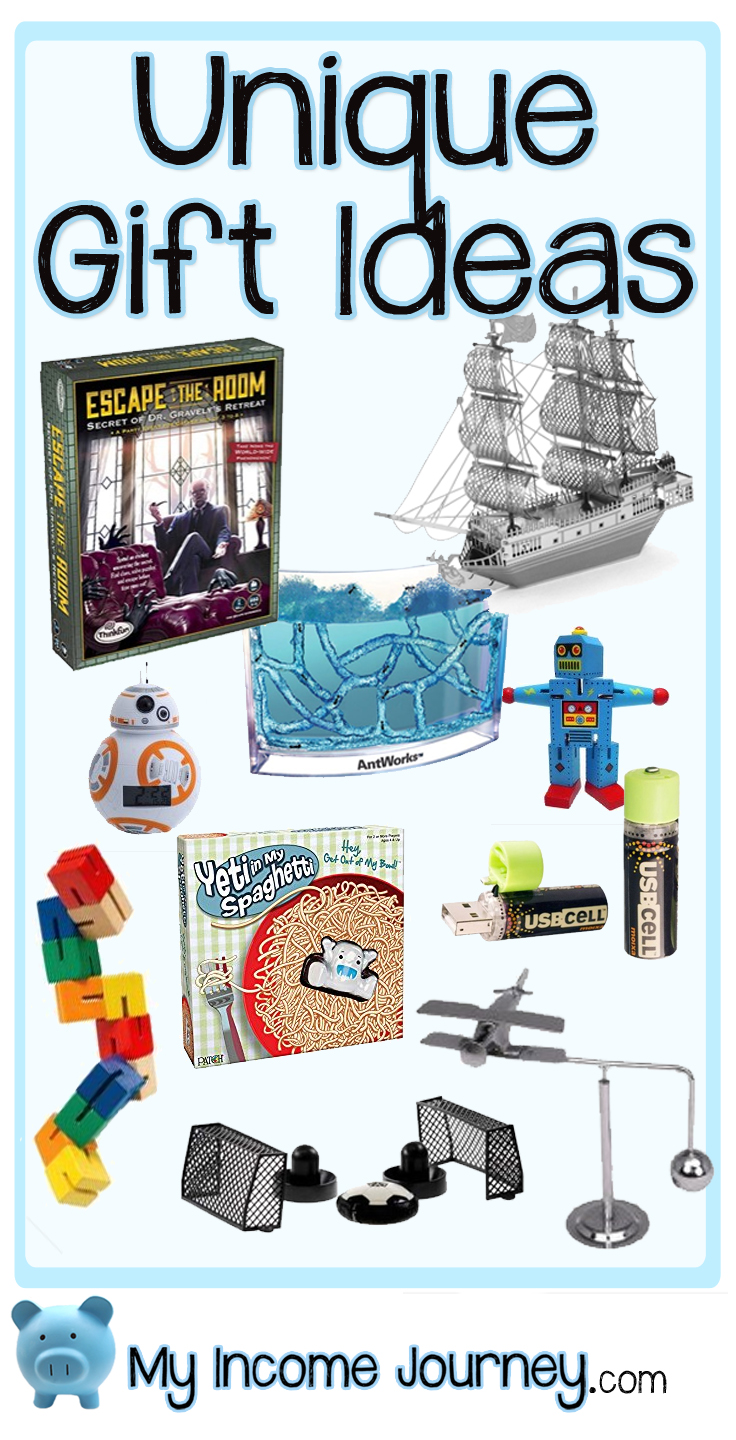
Getting a new piano student is exciting and a bit nerve-racking for me. Will this student enjoy piano? Will they be easy to teach? Will this new student have any musical talent? Will I enjoy teaching this student? There are so many unknowns, but there should also be excitement! The best way for me to be excited is for me to be prepared. If I know what I’m going to teach during the first few lessons then I can focus on making my new student feel calm, happy, and successful. Below are my tips for teaching your first piano lesson. Included are some free printables and awesome resources, so be sure to download those helpful sheets!
The first three lessons for me are the most difficult. Most students begin lessons with little or no prior music experience and there’s so much to teach them. Don’t get caught up in trying to explain EVERYTHING during this first lesson. Yes, you will explain a lot, but don’t give the child so much information as to overwhelm them.
I have created an outline for my first few lessons. This helps me stay organized, keeps the lesson flowing smoothly, and stops me from talking too much and trying to explain everything at once. Always keep in mind how your student feels during your lessons. This first lesson is particularly important. The new student is most likely anxious, excited, nervous, and ready to learn. Keep that enthusiasm up and make the first lesson great!
This page contains ads/affiliate links. See my full disclosure for details.
First Piano Lesson Outline
-
Introductions!
1. Introduce yourself. Tell them how long you’ve been playing, how old you were when you learned, and why you enjoy playing the piano.
2. Let the student introduce themselves to you. Ask why he/she wants to learn to play? Do they know any songs already? Many kids have been taught something by an older sibling or parent or they might have sounded out “Mary had a Little Lamb”. Let them talk and show off without any corrections.
3. Introduce the piano. Explain the black key and white keys and their pattern. Have the student find these patterns. Show how the notes go from low to high, let the student experiment with really high and really low notes.
4. Introduce their new notebook. I make a notebook for all my students. It contains their Piano Assignments, theory pages, songs I print out, etc. Feel free to print these out and use them for your students too.
-
The Musical Alphabet
1. Next, I teach the musical alphabet. I print out a few sets of these cards and line them up across the top of the piano. I have the student practice saying the alphabet forwards and backwards and let them line up the cards with me.
2. Show your student where middle C is. You’ve already pointed out the pattern of two black keys and three black keys., so use this to help identify where C is. Find all the C’s on the piano and teach middle C. Use the musical alphabet to learn all the notes on the piano. This is fun information for the new student to have. Challenge them with things like “find all the D’s on the piano”, etc.
-
Playing Your First Song
1. Show the student how to properly sit at the piano. This could be a whole post in itself so until I get around to it, here’s a good reference point and tips from piano-play-it. The most common mistakes I have to fix early on are students curling their fingers “like t-rex” or playing “flat fingered”. Try to get them in the habit right away of good piano posture.
2. I then use this song called “Snakes” from http://www.music-for-music-teachers.com. It’s a good way for the student to practice keeping their form and start “reading” music. Explain how the notes go up and down and that the pitch goes up and down on the piano along with the music.
3. Using “Snakes”, explain that there are line notes and space notes. See how it alternates from line to space and we can step up from a line to a space or step down.
4. Next, I teach two songs that will help the student learn middle C in both clefs as well as B and D. These songs are from http://www.music-for-music-teachers.com. You might think a two note song is too simple, but remember there’s a lot to learn in these simple pieces. Assume the new student has never seen a staff, ledger lines, or notes before. You don’t need to explain everything, but getting them comfortable with real music and notes is a big step in this first lesson and they can do it!
-
Using 5 Fingers
1. Use this worksheet to teach your student how their fingers will be labeled 1, 2, 3, 4, 5 and how this will be used in their books as they’re first learning the notes.
2. Have your student hold up their hand and with their eyes closed they have to wiggle a certain finger. Say things like, “wiggle your second finger” or “wiggle your fourth finger”. Then have them put their hands on the piano keys and press the finger you say. I like to do this so they realize they don’t have to look at their hands to press the key.
3. Now that the student has been introduced to B, C, D and how fingering is marked, I let them jump right into the John Thompson “Teaching Little Fingers to Play” book. It’s exciting to get your first book and to leave the lesson being able to play a few songs. I teach them the first two songs, “Birthday Party” and “Sandman’s Near”. I don’t worry about the counting or measure lines in this lesson. I play the songs for them, let them try, and assign them to practice these two songs as well as the others we learned when they’re at home.
4. Homework – in addition to the songs they need to practice, I give my students these two simple note naming sheets (here and here) from theperfectstartforpiano.com. New students are typically (and hopefully) eager to learn and can be excited about having homework. Plus the songs that have been assigned are so short that it’s beneficial to give them something else piano related that they can work on right away. Remember, theory homework is not a punishment. Be excited and upbeat about what they’ll get to do at home without your help.
5. Be sure to praise your new student before they leave and tell them how excited you are that you get to teach them how to play the piano! Remind them of all the things they did well and what you want them to work on during the week. I also have a prize box that I let them pick from if they worked hard, stayed focused, and completed everything I asked them to do. I’ll discuss that more in another post, but ending with a prize is a fun surprise!
6. As their teacher, be sure you have ordered the following books to help your student get started. If you haven’t already, read my post about why I recommend these books series and the benefits to each of them.
I hope these tips on teaching your first piano lesson will help you and your students have an awesome first day! Read all my piano teaching tips here!

